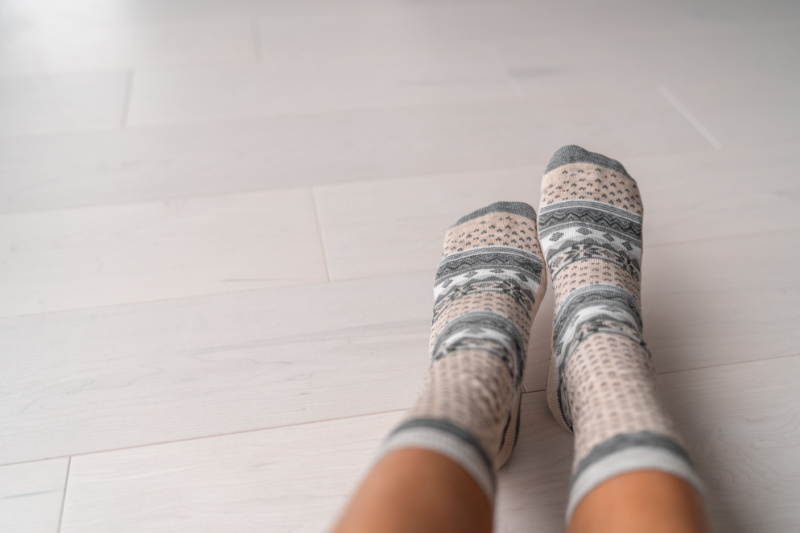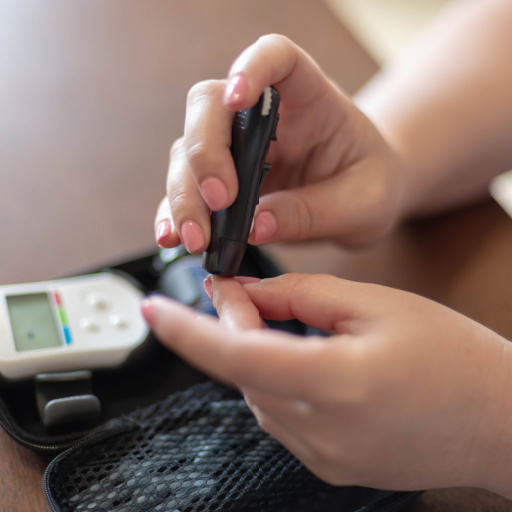For many, the winter season is a time to eat comfort food and spend relaxing moments at home. While it may not affect a healthy individual, people with diabetes may experience a rise in their blood sugar levels. This is a prevalent symptom as the cold weather can keep you indoors, which can lead to several health complications like nerve damage and chronic liver disease in the long run.
How winter affects diabetes
Diabetes is a non-communicable lifestyle condition that is characterized by less production of insulin and the inability to use it efficiently. Last year, many people with diabetes reported higher HbA1C levels (average blood sugar levels over three months) than usual during the winter season. Increased intake of comfort foods (fatty, fried foods, foods rich in carbs and sugar) can lead to spikes in blood sugar levels. Therefore, you should adopt certain precautionary measures like eating healthy and maintaining physical activity levels to keep your blood sugar levels in check.
How to control diabetes in winter

The winter season is a time of festivity, marked by gatherings, delicious meals, and feasts. While festivities can lift your mood, these feasts can disturb your diet plan. In addition, you can also experience winter lethargy as people tend to get more inactive or slip into a sedentary lifestyle during this time. Therefore, it is vital to incorporate indoor physical activities like spot walking, skipping, climbing stairs and doing household chores to stay active and control your blood sugar levels.
How to manage diabetes in winter
Here are some tips on how to manage diabetes in winter that you can adopt to stay fit and healthy:
Diet and nutrition
During the winter, we feel hungry as our body needs more energy to keep our body warm. It is vital to maintain a low glycemic index and a low-fat diet to manage diabetes in winter. While most of us would love to curl up in bed and sip a cup of hot chocolate, you can choose alternatives like green tea. You can also have a warm soup rich in micronutrients like fiber, vitamins and minerals. The trick is to find alternatives for your favorite dishes. Avoid consuming fried foods and drinks with added sugar and excess carbs, as these food products can cause a spike in your blood sugar levels, which can lead to heart attacks and strokes.
Here are some special healthy foods that are specific to the winter season:
- Bajra khichdi
- Sesame seeds laddoo
- Palak paneer
- Makki di roti
- Sarson da saag
Exercise and physical activity
Exercise for at least 30 minutes daily to lower your blood sugar levels, enabling your body to utilize insulin efficiently. Doing so will keep your body warm and improve your mood. If you are thinking about how to manage diabetes in winter, then practise yoga asanas and pranayamas like Surya Namaskar or sun salutation, anulom vilom and reclining bound angle pose, clean your room or do Zumba or aerobics to stay physically active.
Monitoring blood sugar levels
Any change in the weather impacts your body’s ability to produce insulin. You may also find it harder to check your blood sugar levels in winter, as the cold temperatures can cause chills, leading to inaccurate readings. You can, at regular intervals, track how your diet affects your blood sugar levels.
Avoiding illnesses and infections
Diabetes is more challenging to manage when you are sick. If you get a cold, virus or the flu, follow these guidelines to stay healthy in winter:
- Get a flu shot
- Get 7-8 hours of sleep
- Wash your hands often
- Avoid spicy food
- Cover your mouth and nose while sneezing or coughing
- Gargle with lukewarm salt or turmeric water
Foot and skin care

Every winter, almost 10 to 15% of people with diabetes visit the hospital because of foot and skin conditions, like foot ulcers and infections, which may even require amputation in severe cases. In addition, our skin tends to get dry because of low humidity in winter, leading to cracks and infections. Check your feet and skin regularly for red, shiny, inflamed areas to find affected areas. Look for discharge, corns, changes in color and odor in your feet or hands to detect such infections. If you have diabetes, wear socks and padded shoes. You can use a moisturizer to manage dry skin.
We discussed how to manage diabetes in winter. Following these practises can help prevent spikes in your blood sugar levels and control diabetes in winter easily.
Key Takeaways
- While festive celebrations can improve your mood, they often disrupt your diet plan. Additionally, many people experience winter lethargy, leading to a more inactive or sedentary lifestyle during this season.
- To stay active and help control your blood sugar levels, incorporate indoor physical activities such as spot walking, skipping, and doing household chores.
- To effectively manage diabetes in winter, it’s important to exercise regularly, maintain a balanced diet, and monitor your blood sugar levels.
Stay tuned to the Activ Living Community. Keep up to date with the latest health tips and trends through expert videos, podcasts, articles, and much more in nutrition, fitness, mindfulness, and lifestyle conditions like Asthma, Blood Pressure, Cholesterol, and Diabetes.
Activ Living ke saath sahi sehat ki shuruaat ABHIkaro.
You may also be interested in the following blogs:
- Yoga Asanas To Gain Control Over Your Blood Sugar Levels
- Impact of High & Low Blood Sugar Levels on Your Body
Popular Searches
How to lower blood pressure | Fruits good for liver | Unhealthy foods | Ragi Benefits | Basal Metabolic Rate | Acupressure points for High Blood Pressure | Ayurvedic medicine for blood pressure | How to control cholesterol at home | Homeopathy for Asthma | Biological Age | Home remedies for TB | Natural beta blockers | Negative effects of internet | Types of walking | Blood pressure calculator | Blood sugar calculator | BMI Calculator





 1800-270-7000
1800-270-7000





